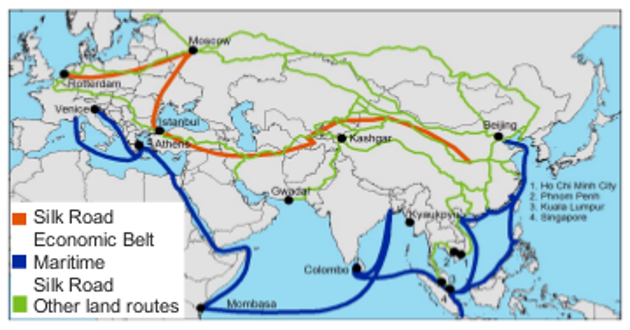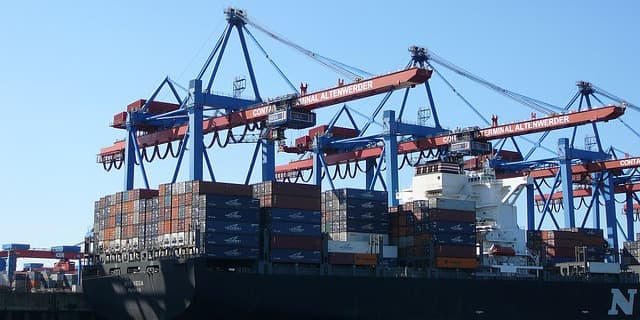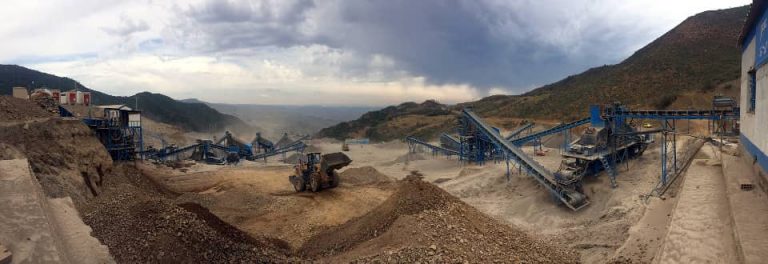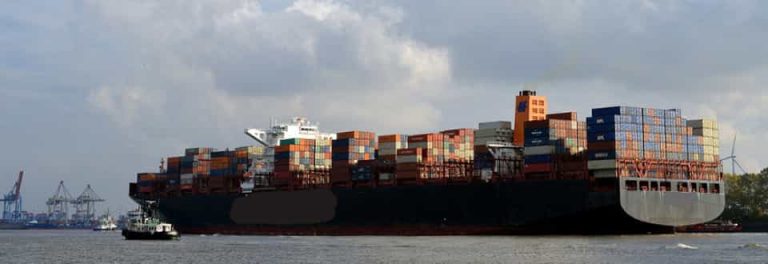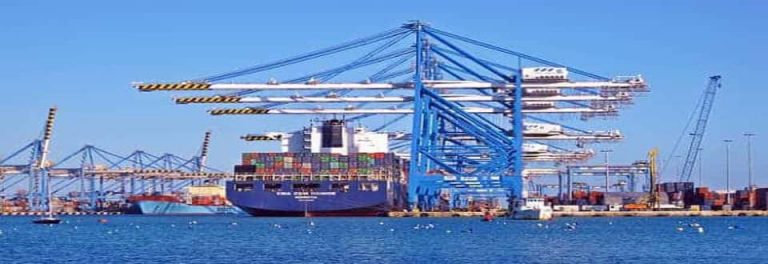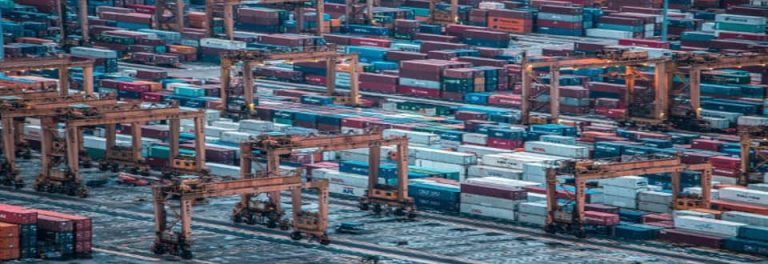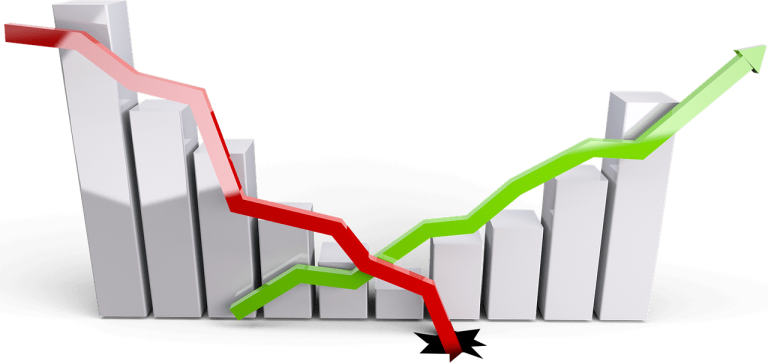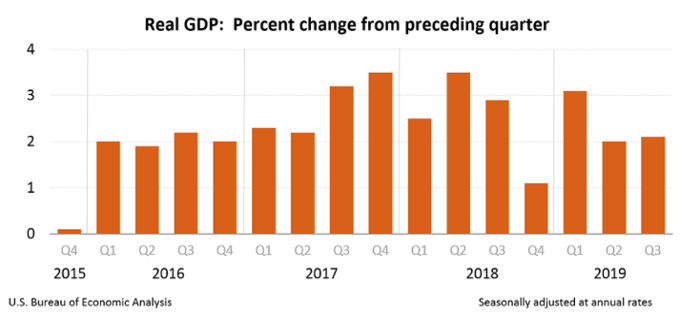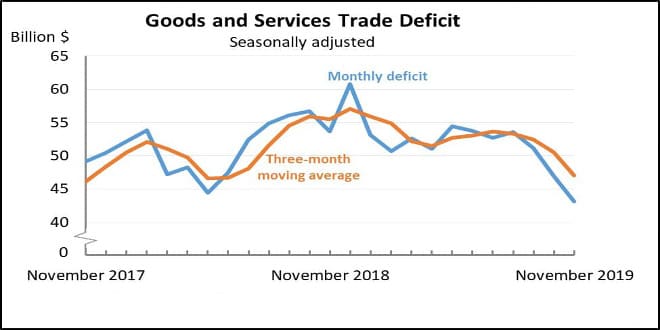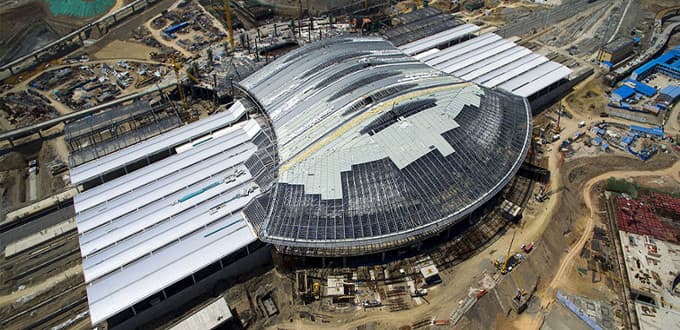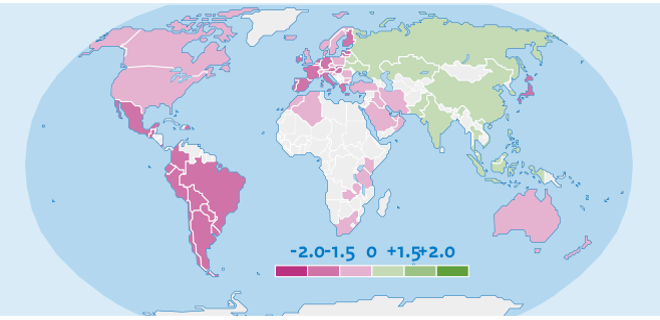An Interconnected & Interlinked World
of Business, Trade, and Commerce.
of Business, Trade, and Commerce.
Foreign Direct Investment inFlow in The US
The Largest Sources of FDI in The United States
And, The Benefits of FDI In-Flow
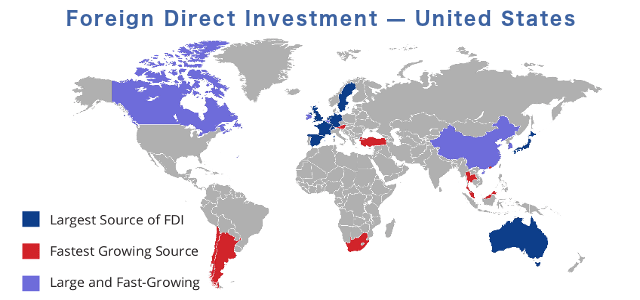
The Inflow of Foreign Direct Investment (FDI) in the United States was increased by US $50,582 Million in the third quarter of 2019 per the data compiled from the U.S. Bureau of Economic Analysis.
The average of the FDI-inflow in the US for the period 1994-2019 was US $26,140 Million. It was peaked an all time high of US $55,831 Million in the second quarter of 2018, and a record low of US $-9,988 Million in the fourth quarter of 2001 { Source: U.S. Bureau of Economic Analysis }.
In contrast, Global FDI flows was decreased by 27% in 2018 to USD 1,097 billion, largely due to the US tax reform. This continues the 2017 trend where FDI flows decreased by 16%. But, FDI is expected to see a rebound in developed economies as the effect of these tax reforms had winded down in 2019.
Global FDI in-Flow—in Comparison:
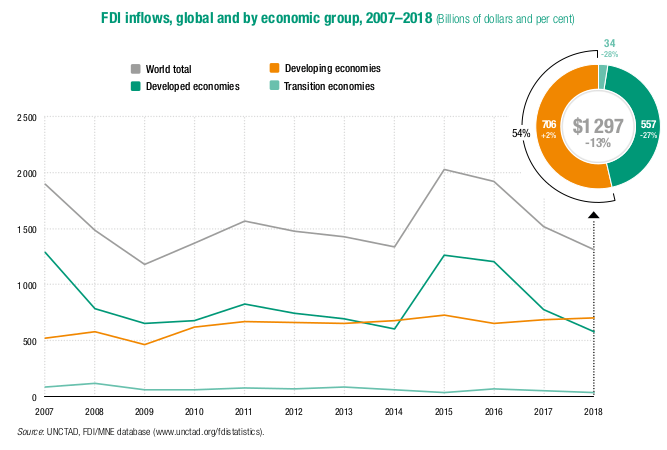
The tax-driven fall in FDI was cushioned by increased transaction activity in the second
half of 2018. The value of cross-border merger and acquisitions (M&As) rose by 18 percent, fueled by United States MNEs using liquidity in their foreign affiliates that was no longer encumbered by tax liabilities.
As for the United States, usually the largest outward investor, registered negative outflows in the first half of 2018 but regained its position as the major source of FDI outflows worldwide in the second half of the year.
Inflows to the OECD area decreased by 23%, largely driven by disinvestments from Ireland and Switzerland and reduced flows to the United Kingdom, the United States and Germany. Outflows from the OECD area decreased by 41% as US multinationals repatriated large amounts of earnings held by foreign affiliates.
FDI inflows to non-OECD G20 economies increased by 8% while FDI outflows decreased by 26% as outflows from China declined for the second consecutive year.
Japan, China and France were the largest sources of FDI outflows worldwide. China’s FDI inflow into the United States has been on steep decline since the 2017. China’s share for FDI Inflow, as well as its FDI outflow, is on the rise.
FDI flows to and from Special Purpose Entities (SPEs) dropped to negative levels for the first time since 2005, due to large equity disinvestments to and from SPEs in Luxembourg, the Netherlands and Hungary.
Despite concerns about an economic slowdown, FDI income paid by affiliates in OECD countries to foreign parents increased by 17% and FDI income received by OECD parents increased by 9% in 2018.
Financial centres accounted for more than half of OECD income receipts, but receipts from offshore financial centres dropped in 2017, perhaps in response to tax policies addressing Base Erosion and Profit Shifting (BEPS).
China, on the other hand, is expected to see sharp rise in both the out-flow and in-fllow of FDI thaks in large parts to the Belt and Road Initiative & Made in China 2025 projects.
The Benefits of FDI In-Flow in The United States
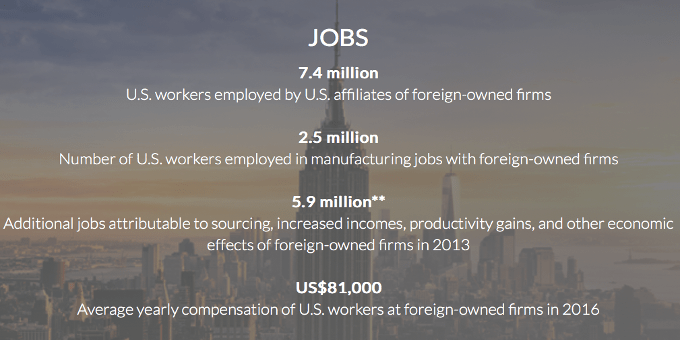
Foreign direct investment (FDI) plays an essential role in ensuring U.S. economic growth and prosperity, creating highly-compensated jobs, spurring innovation, and driving exports.
The following information and data presents the major benefits of FDI inflow to the U.S. economy in aggregate.
CapitalUS$4.3 trillion | InnovationUS$62.6 billion |
US$253.6 billionTotal FDI flows in the United States in 2018 (FDI measured over a specific period of time) | 53%*Percentage of U.S. utility patents filed from foreign sources in 2016 |
U.S. ExportsUS$382.7 billion | U.S. Taxes:16% |
The Significant Sources of FDI In-Flow US
The total Foreign Direct Investment in the US was reported to have declined significantly in 2018. Data is not available for the year 2019.
The following tables show data for the largest sources of FDI in the United States for the year 2018—as compiled from the U.S. Department of Commerce and, also, the fastest-growing sources of FDI by percentage for the year. The changes in comparison to the past year are due in part to the US ‘Tax Reforms’.
Largest Sources of FDI in the United States
[Note: Values are in Millions of US Dollars]
| Rank | Market | 2018 Position | Share of Total |
|---|---|---|---|
| 1 | United Kingdom | 597,219 | 13.7% |
| 2 | Canada | 588,399 | 13.5% |
| 3 | Japan | 488,714 | 11.2% |
| 4 | Germany | 474,472 | 10.9% |
| 5 | Ireland | 385,322 | 8.9% |
| 6 | France | 326,437 | 7.5% |
| 7 | Netherland | 228,144 | 5.3% |
| 8 | Switzerland | 222,491 | 5.1% |
| 9 | Belgium | 84,661 | 1.9% |
| 10 | Spain | 76,380 | 1.8% |
| 11 | Australia | 71,460 | 1.6% |
| 12 | Bermuda | 60,750 | 1.4% |
| 13 | China | 60,182 | 1.4% |
| 14 | South Korea | $57,623 | 1.3% |
| 14 | Sweden | 55,424 | 1.3% |
Fastest-Growing Sources of FDI in the United States
| Rank | Market | 2018 Positions | CAGR: 2013-2018 |
|---|---|---|---|
| 1 | Argentina | 4,896 | 57.9% |
| 2 | China | 60,182 | 35.2% |
| 3 | Thailand | 2,056 | 35.0% |
| 4 | Ireland | 385,322 | 34.2% |
| 5 | Chile | 3,483 | 23.9% |
| 6 | Singapore | 54,227 | 23.0% |
| 7 | Bermuda | 60,750 | 21.0% |
| 8 | Belgium | 84,661 | 20.1% |
| 9 | Turkey | 2,357 | 17.2% |
| 10 | Canada | 588,399 | 17.1% |
| 11 | Austria | 6,290 | 15.9% |
| 12 | Hong Kong | 16,888 | 15.4% |
| 13 | South Africa | 4,991 | 15.1% |
| 14 | Malaysia | 2,417 | 13.3% |
| 15 | South Korea | 57,623 | 13.2% |
{ Source: U.S. Department of Commerce | SelectUSA }
[ Note: UBO refers to Ultimate Beneficial Owner. CAGR refers to Compound Annual Growth Rate. ]
元 $ € ¥ ₿
Information
Reports & Analysis
To Help Evaluate
The Potentials For
Business
&
Investment
In an Interconnected
World
-
The Belt and Road Initiative & Made in China 2025
Riding high on the fast tracks of the Belt and Road Initiative, Made in China 2025 is rapidly making inroads into the countries... Fierce competition from Chinese companies...
-
MIC 2025 || The Changing Landscape of Chinese Economy
It was in 2015 that China unveiled its Made in China 2025 (MIC 2015) project. Since then, Chinese economy is metamorphosing and changing at a breakneck pace...
-
Top Freight Forwarders by Country
Large scale ‘local area’ Freight Forwarders listed here, through their contacts and arrangements, also provide services on a global scale. Their main strength though lies in...
-
Most of the Top Global Freight Forwarders listed here serve all the major ports across the Globe, and, through relationships with their business partners, also provide a full suite of...
-
Glossary: Shipping, Freight, & Supply Chain Logistics
Like any other professional field, the shipping/freight industry has its own unique set of terminology—A rather extensive and complex one. Here we have compiled the Glossary of the most useful...
-
Global Foreign Direct Investment—Inward Flow
A comprehensive and historical Global FDI Inward-Flow Data spanning the period of 2000—2018. The data is compiled by grouping and associating a variety of economies together; by the state of...
-
The new phase of economy in China is an opportunity for the businesses. The emphasis is now on raising the living standards of masses, implementing supply-side reforms, and opening up...
-
Top 50 Container Ports in The World
Large Capacity & Super Busy Container Ports in a country are the pointers of country’s economic potentials...Bulk of the world trade in goods—more than 90% of it...
-
Supply Chain | Definition and Objectives
Supply Chain can be viewed as a network connecting a business to its suppliers and distributers to facilitate the production, processing, and distribution of its products to the consumers. It incorporates...
-
Global Business | Supply Chain & Logistics
With the technology—and global eCommerce platforms like Ali Baba, JD.com, Tancent, Kaola, Lazada, WooCommerce, VTEX, and Shopify etc, it is easier to sell products and services Globally.
-
Shipping Logistics | The Role of Service Providers
The logistics of getting the goods delivered to faraway destinations—especially to foreign markets, is a complex business. It requires the services of outside entities to...
-
Freight Forwarders | Role in Global Commerce
Freight Forwarders specialize in taking care of the entire process for their shippers | from warehousing to the shipping of their merchandise. They act as an agent and intermediary...
-
Real GDP | Nominal GDP vs GDP PPP
In evaluating and analyzing global investment opportunities and, also in the business decision making process, we need to know the actual comparative state of the economies of various countries and...
-
With the perspective of charting course for the expansion of business or investment, an analytical review of the ‘real value’ of a nation’s/region’s GDP is essential. To this end, an understanding of the methodologies used in...
-
New Global Business Order—The Global Information Stage
Whatever the business be, it has to be ready to play on the Global Stage. It is the global arena. The Supply-and-Demand chain is global. ..There is no business that can be considered as purely a...
-
Global Real GDP Growth Rate—And Forecast
Real GDP provides an inflation-adjusted measure that reflects the true value of all goods and services produced by an economy in term of real value of...
-
Foreign Direct Investment Inward Flow in The US—A Global Perspective
The Inflow of FDI in the U.S. was up by US $50 Billion in the 3rd quarter of 2019. FDI plays an essential role in the economic growth, creating jobs, and driving exports...The tables present...
-
US Gross Domestic Product: 2019—By Quarters
Real US GDP increased at an annualized rate of 2.1 percent in the 3rd quarter of 2019—that was up from the second quarter. Real gross domestic income (GDI)...
-
Foreign Direct Investment—Impact and Analysis
Foreign Direct Investment (FDI) plays an important role in the development and growth of any country’s economy - especially the developing countries. But, in actual practice...
-
Foreign Direct Investment and Business in China
China is establishing itself as the Model Destination for FDI inflow and a hub for corporate relocation and R&D...
-
US Global Trade & Top Trading Partners | Year-to-Date
Since hitting the peak in November 2018, U.S. global trade deficit in goods and services has been on the decline. But, the declining trends in both Imports and exports...
-
The Growth of Mobile Payments and Virtual Banking—A Global Perspective
Mobile Payments, Virtual Banking, and other modes of mobile transactions - both at consumer and commercial level, are growing globally at an ultra fast pace — more so in China and Asia Pacific and...
-
Belt and Road Initiative—Objectives & Achievements
As of the end 2019, the BRI — a project to interlink the global economies with China, includes 140 countries—encompasing more than 2/3 of the world’s population. The trade on BRI is...
-
In 2019 US imports from China dropped more than 12.5 percent to US$456 billion (Source: United States’ Census Bureau ) while China’s imports from the US dropped to US$122.7 billion...
-
Humans by nature - or by need, are traders. We trade our work, services, produce, or products for money. Then, we exchange that money for the goods and services that we need. Any excess/leftover money is either directly invested or deposited in the banks—thus, making the money to recirculate in the economy again.
Information, Data, and Reports organized alphabetically By Topic:
Global Business
Investment
Trade & Commerce
Always The Key to
to Wealth & Prosperity
Since before the days of
Camel Caravans & Sailboats


